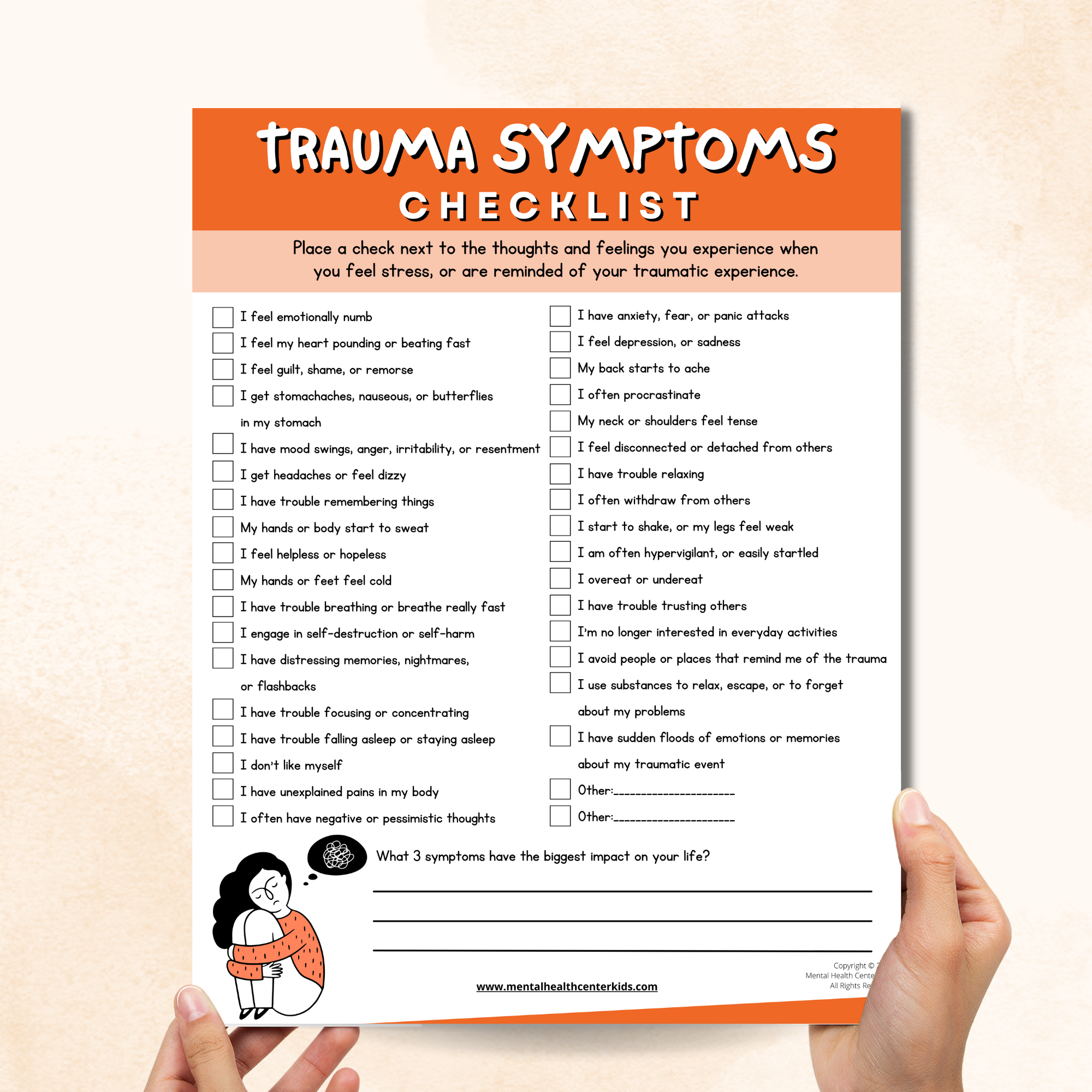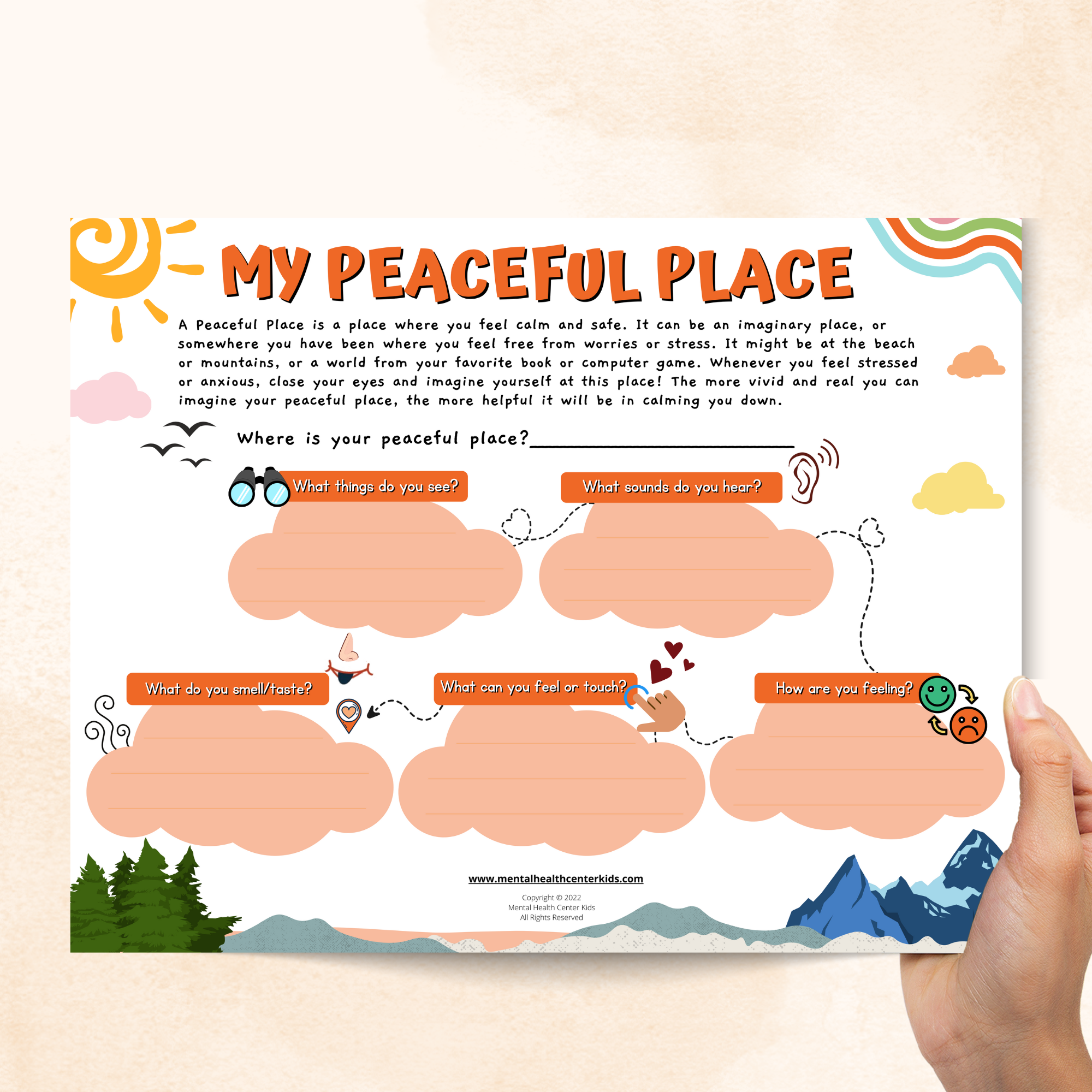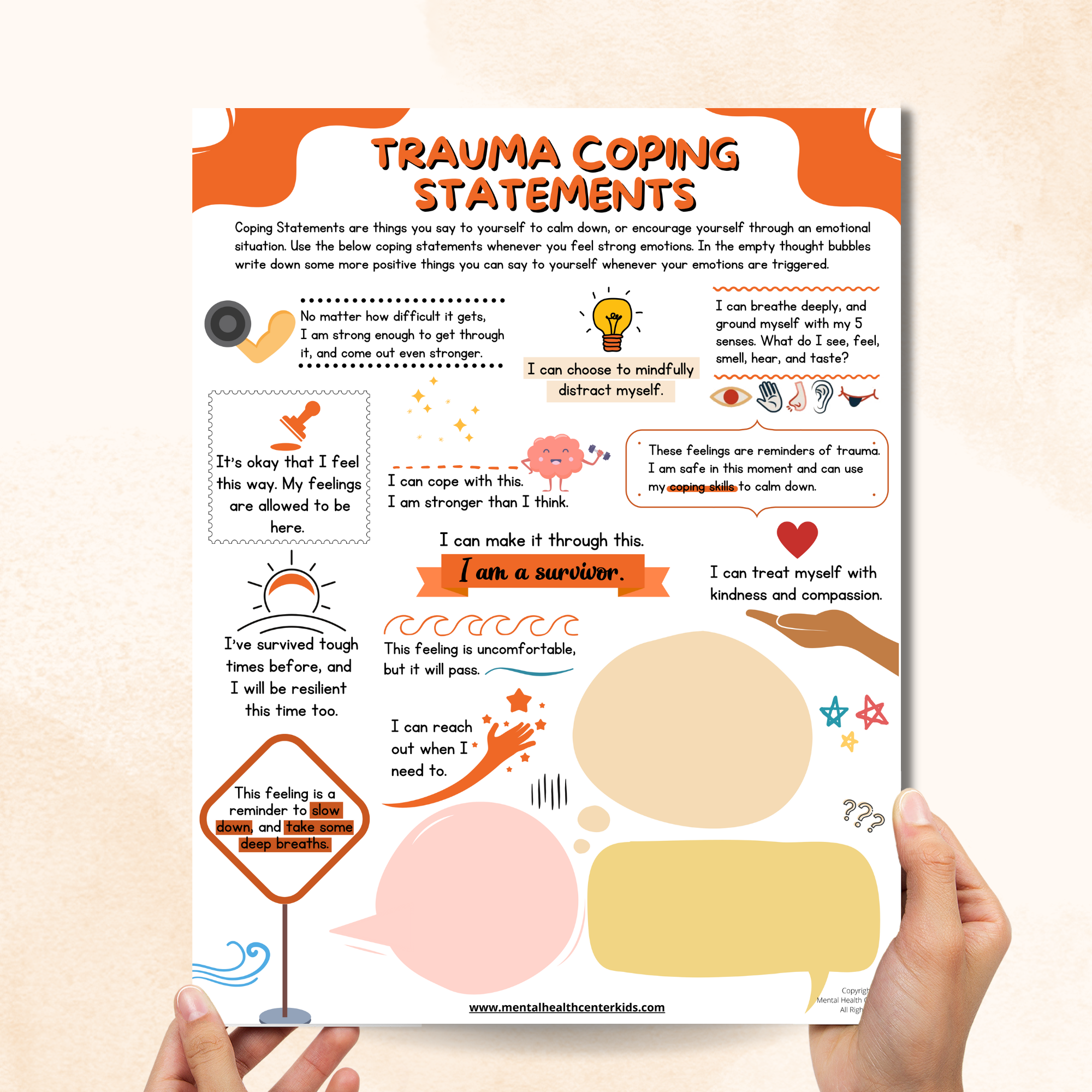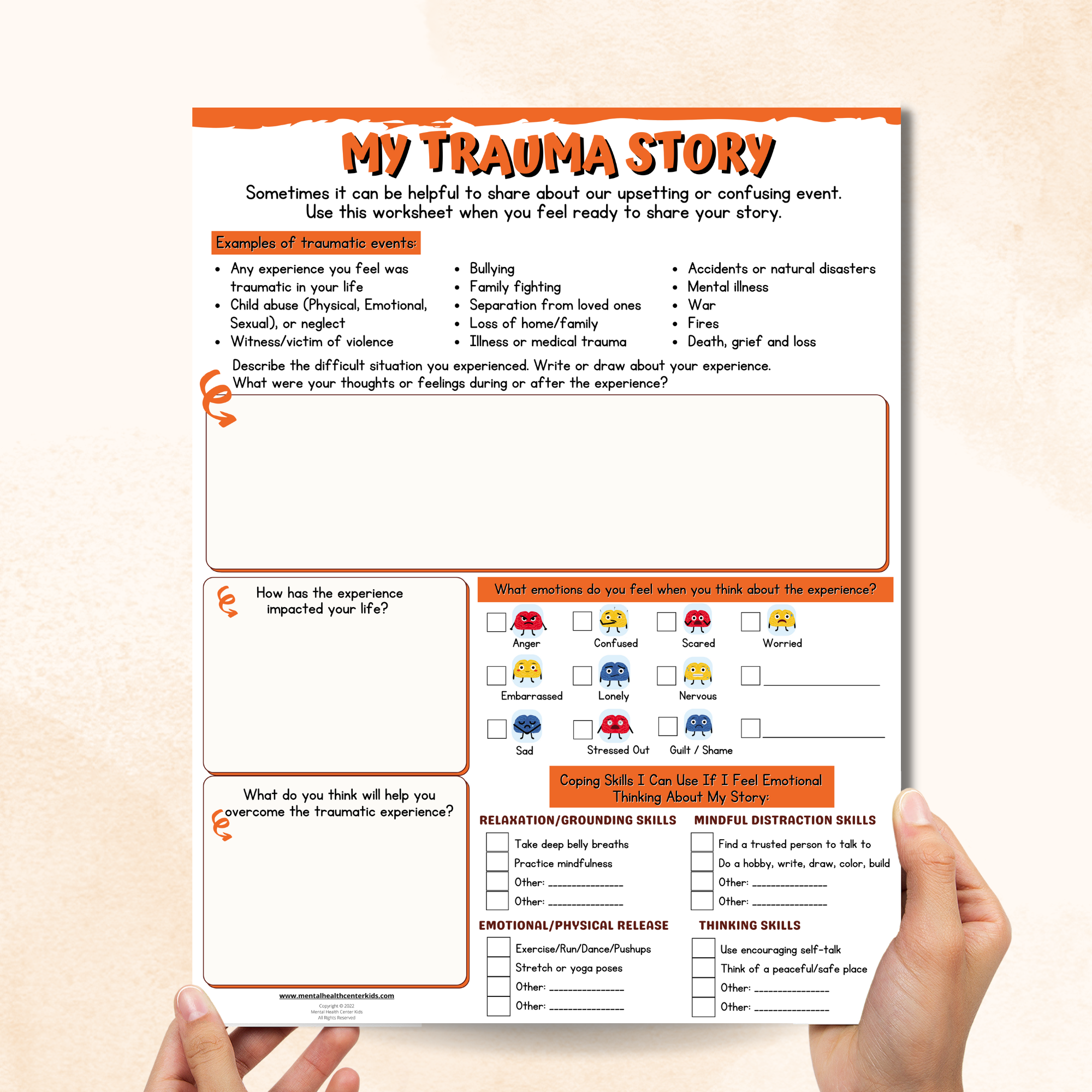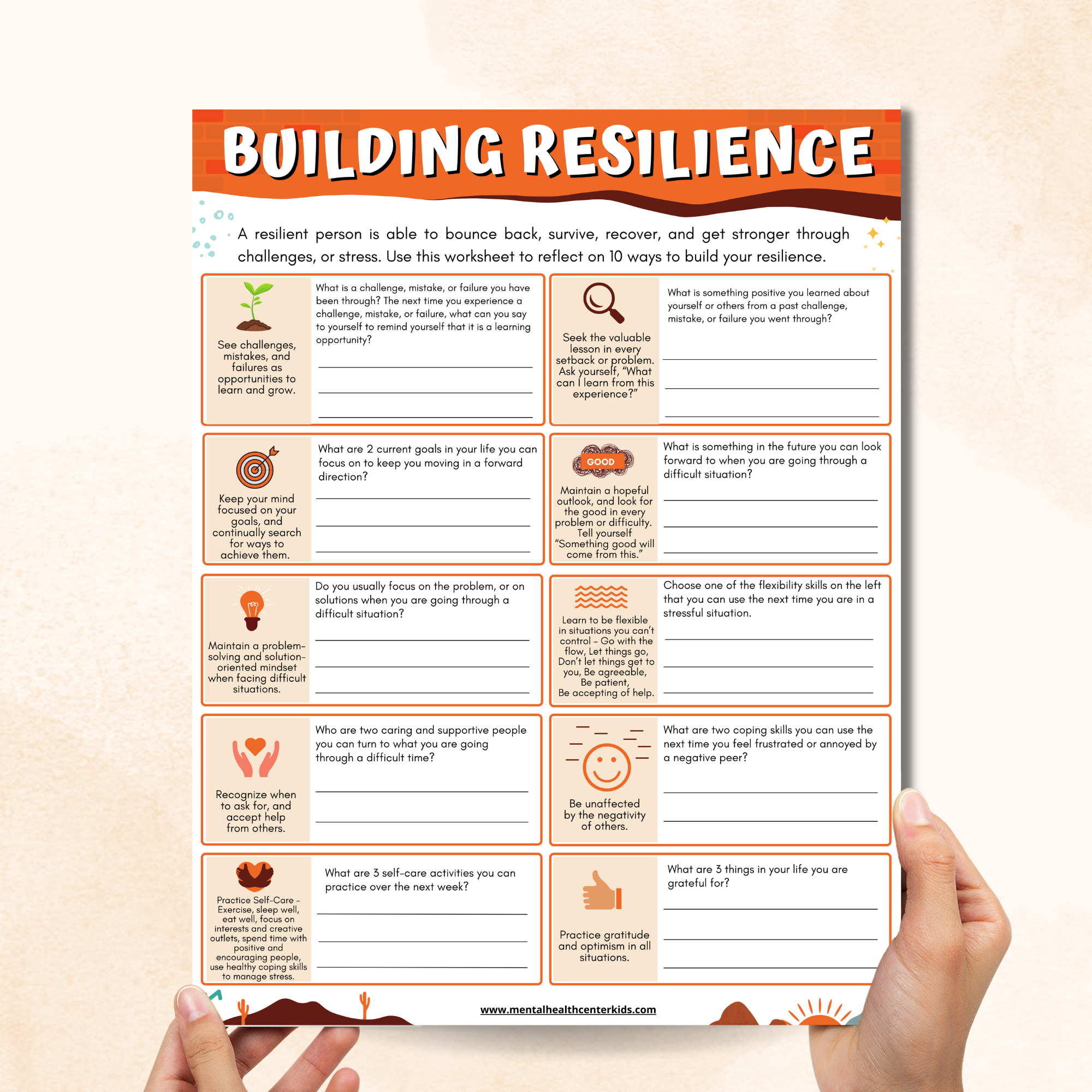|
Key Takeaways:
- Trauma can cause adolescents to become less trusting of others, have mood swings, and respond negatively to stress.
- Trauma worksheets can help children re-establish safety with their peers, become more resilient in stressful situations, and improve their physical health.
- Examples of trauma worksheets include trauma symptom trackers, self-care checklists, and trauma coping statements.
|
Trauma affects nearly half of American children, negatively impacting their development and ability to succeed in the future [*]. Traumatic events can affect a child’s sense of trust, mood, and behavior.
Fortunately, incorporating trauma worksheets into your child’s therapeutic journey can help them cope and identify triggers.
What are Trauma Worksheets?
Trauma worksheets aim to help resolve various emotional and behavioral challenges caused by trauma. They contain activities that help adolescents learn about their feelings, develop relaxation skills when they experience stress, and learn how their thoughts influence their emotions.
What are the Benefits of Trauma Worksheets?
When left untreated, trauma can cause adolescents to become hyper-vigilant, avoidant, defensive, and untrusting. Studies even show that emotional trauma can affect the brain by increasing fear and negatively impacting memory functions [*].
By using trauma worksheets, you can gradually reduce these symptoms and instill the following benefits:
-
Re-established safety. Processing trauma can help children instill a new sense of internal and physical safety.
-
Healthy coping skills. Children affected by trauma may struggle to cope with complicated feelings. Using worksheets can help them respond to reminders of the traumatic event more productively and bounce back more quickly.
-
Decreased traumatic stress symptoms. Practicing healthy de-stressing mechanisms can decrease traumatic stress symptoms like withdrawing socially, feeling shame, or experiencing nightmares.
-
Improved physical health. Understanding trauma and finding ways to cope can help adolescents get better sleep and feel more energized.
10 Printable Trauma Worksheets for Kids & Teens
Reducing trauma symptoms is no easy feat, and it may take time. Use these trauma and PTSD worksheets to support your child in their healing journey.
1. Trauma Symptoms Checklist
The first step in healing is identifying and learning how to deal with trauma triggers. With a trauma symptoms checklist, your child can become more self-aware of the feelings and emotions they undergo when they relive their trauma.
These symptoms might include feeling emotionally numb, experiencing sudden and unexplained body pains, and feeling hopeless.
2. Physical Symptoms of Trauma
Physical symptoms of trauma can be surprising and confusing, especially for young children. By exploring how trauma affects the body, children can better understand what they might be going through.
Some physical symptoms might include sweating, nausea, backaches, fevers, and difficulty breathing.
3. PTSD Symptoms Worksheet
Children diagnosed with Post-Traumatic Stress Disorder (PTSD) may experience more severe mental, emotional, and physical symptoms. This PTSD symptoms worksheet is a tool for recognizing these symptoms to prevent panic attacks.
An adolescent suffering from PTSD might be easily startled, constantly anxious, have trouble focusing, or be reactive.
4. Trauma Self-Care Checklist
Adolescents who experience trauma may unintentionally neglect their health. They might forget to eat on time, not get enough sleep, or abandon their hygiene. A trauma self-care checklist can help kids prioritize their daily tasks.
Remind them that self-care isn’t a chore—it’s necessary, and their bodies will thank them in the long run!
5. My Peaceful Place
Imagination is a restorative experience that unlocks a child’s creativity and can be an essential part of the healing process [*]. My Peaceful Place is a worksheet encouraging children and teens to access their “happy place” or somewhere free of worry and stress.
In this exercise, encourage your child to think about this place while listing what they observe around them—smells, sights, sounds, and textures. This activity can help bring them to a calm and relaxed state.
6. Trauma Coping Statements
Like affirmations, trauma coping statements can be a powerful tool for children who’ve encountered high-stress situations. When they enter a dark headspace, encourage your child to repeat statements like “I can cope with this,” “I can treat myself with kindness and compassion,” and “I’ve survived tough times before and can do it again.” Frequent repetition will help them believe and embody these statements.
7. Positive Habits for Trauma
No two people handle trauma the same way. What may provide comfort for one may be less impactful for another. Use our Positive Habits for Trauma checklist to discover the best coping mechanisms for your child.
For instance, if your child has unhealthy coping habits, such as reacting with anger or having temper tantrums, you can use our worksheet to practice relaxation techniques like deep belly breathing.
8. My Trauma Story
Talking about a traumatic experience is not easy. However, sharing information with a trusted adult can help a child process their experience. Use our My Trauma Story worksheet as a therapeutic tool to help your child discuss and process their trauma.
Our worksheet encourages children to share details of the trauma and express how they feel it has impacted their lives. Ask them to reflect on what they think will help them overcome their trauma, such as discovering grounding skills, finding outlets for mental and physical release, or speaking with a professional.
9. Resilience Worksheet
Overcoming trauma doesn’t mean you’ll never relive it. Occasionally, adolescents may encounter something that triggers past feelings. Thus, building resilience when learning how to heal from trauma is critical.
Use our resilience worksheet to help your child identify areas for growth and develop skills to bounce back. Our worksheet asks questions like:
- What goals in your life can you focus on moving forward?
- What is something you’ve learned about yourself from a past challenge?
- What are some coping skills you can use next time you feel pressured?
10. Trauma Coping Skills Tracker
Regaining control is an empowering stage of overcoming trauma. Once your child has learned to manage their trauma symptoms, it's best to use a trauma coping skills tracker to monitor what works and what doesn’t.
For each coping skill they’ve developed, they can assign a trauma trigger and rate how well this skill works for them. Our worksheets suggest additional skills and exercises your child can try.
The Bottom Line
Healing from trauma is not an overnight process. However, using trauma worksheets can equip your child and give them the mental armor to overcome stressful and painful experiences.
Check out our other trauma worksheets to discover more coping techniques that work best for your child.
Sources:
- “Did You Know Childhood Trauma Affects Nearly Half of American Children?” NICHQ - National Institute for Children’s Health Quality, 2021.
- Carrion VG, Wong SS. “Can Traumatic Stress Alter the Brain? Understanding the Implications of Early Trauma on Brain Development and Learning.” Journal of adolescent health, 2012.
- Rubinstein D and Lahad M. “Fantastic reality: The role of imagination, playfulness, and creativity in healing trauma.” Traumatology, 2023.




